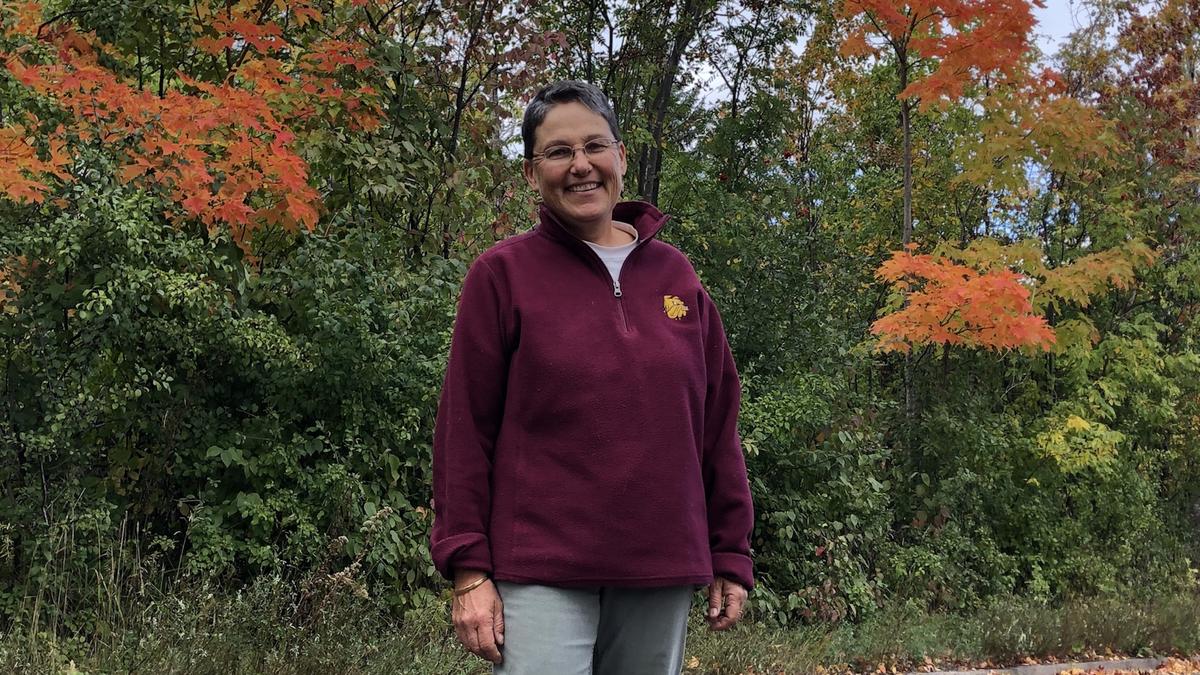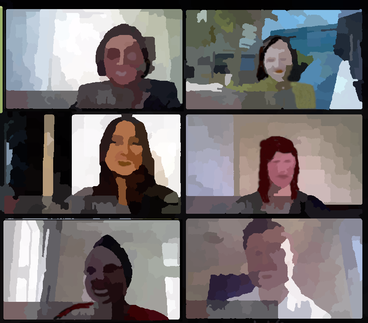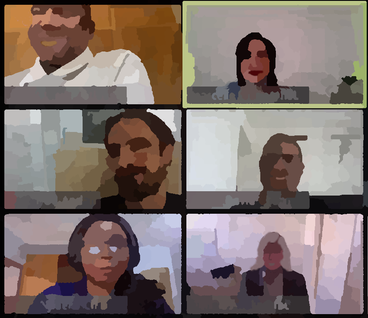When classes switched to online in the spring of 2020, many people were caught off guard, but not Helen Mongan-Rallis, Ph.D., associate professor of education.
Her students are studying to be K-12 and high school teachers, so she integrated online formats like Zoom, Google Drawing, and Jamboard into her classes well before 2020. Overall, she sticks to one central concept, “Until every single student is learning, I haven’t succeeded.”
That motto sometimes led her to creative solutions, during the COVID-19 pandemic and before.
Missing Assignments
Mongan-Rallis shared a pre-COVID-19 story about a student who attended class regularly but never turned in assignments. After many failed attempts to schedule an appointment with the student, Mongan-Rallis pulled the student aside after class and invited the student to take a walk.
“An office is sometimes a symbol of power,” she says. Threatening spaces can push away students who need help. On the walk, she treated the student to a beverage at the Northern Shores Coffee Shop and the two began to have an honest conversation about what was causing this student to fall behind.
Mongan-Rallis was familiar with a ‘cycle of shame’ phenomenon that causes missing assignments to escalate. She was determined to help the student pull out of the cycle and complete the class. They agreed to meet one-on-one.
“I invited the student to respond orally to the assignment, describing what she would have written," Mongan-Rallis says. "This way I could encourage her and give her prompts and reassurance as needed so that she could be successful. As she spoke, I typed what she said. She ended up with a copy of her responses that she could then submit. Within only a few meetings, she had gained the confidence she needed to do her work on her own, and she was soon caught up.”
The situation was one of Mongan-Rallis’ most difficult, but she says, “I feel like it ended up a success.”
Teaching Philosophies
The attention Mongan-Rallis pays to every student’s success is heightened by the current world crisis. While she has a long history of intertwining technology and teaching, the true test came for her in spring of 2020. She and the students in her Technology for Teaching & Learning got a real-life dose of what it meant to learn and teach on-line.
Mongan-Rallis shares methodologies and secrets she uses to lead an online learning experience. Her goal is to empower UMD grads to leave their students feeling confident and engaged.
- Social Connections, Music and Sacrificing Pride
Before every class, Mongan-Rallis opens the sessions well before class time. As students stream in, there is time for social conversations and a chance for classroom friends to connect with each other.
Oftentimes, Mongan-Rallis will start out the class playing music chosen by students, reflecting their interests and backgrounds, as a way of creating an inclusive and welcoming environment.
Mongan-Rallis once led the class in a playful activity. She had to swallow her pride and do something she wasn't very good at -- namely, singing. She invited her friend Sara Thomsen to make a video for the students of her singing the song, “Somewhere to Begin.” The students learned the words and they sang the song together, with Mongan-Rallis leading the virtual sing-along.
- Students First
"I start out the semester by inviting students to share with me their interests, aspirations, and anything else so that I can better support them," Mongan-Rallis says. She meets them again at the mid-point. "I want students to feel welcomed and also want to be able to individualize their learning."
Teachers need to create a “brave space,” she says. “I think it is unrealistic to say ‘safe’ because a lot of marginalized groups don’t feel safe… In our alliance there is an agreement of treating each other with kindness.” She pays special attention to pronouncing everyone’s name correctly and respecting a students choice to have their camera off during class.
- Don't Worry
Mongan-Rallis believes that for students to develop the confidence and skills to use technology as future teachers, it is important for them to be willing first to take risks and make mistakes. "Instead of the mistakes being seen as a deficiency, the students share with their classmates where and how they got stuck. As they figure out solutions, they develop skills and confidence in problem-solving."
She says, “The most valuable learning in the class comes from making mistakes, not from getting it right the first time. She wants students to try new things and experiment and “make lots of glorious mistakes.”
Comfortable Classes Mongan-Rallis says all of these methods lead to her overall goal, “guiding every student to be successful.” At some point, each of her students finds methods that work. “I want to walk beside students to have them find their comfort zone; and [then] take one step out,” she says. She watches them create a space comfortable for teachers as well as student learning. They get used to a certain stride. That's when she stops teaching and let’s them go off on their own.
---
About the UMD Department of Education
This story was co-written by UMD student Jack Harrington, who is majoring in writing studies and minoring in sociology and LGBT studies. Jack works with Cheryl Reitan in University Marketing and Public Relations.


